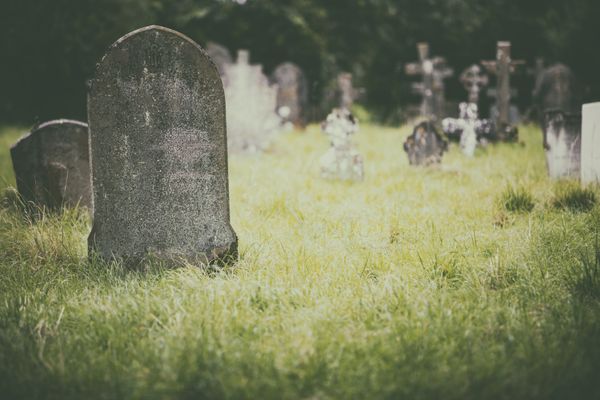1.3.1
Changes in Leaders' Control of the State
Struggle for Power, 1953-56
Struggle for Power, 1953-56
Stalin had been such an immense figure as leader of the Soviet Union, and after his death many competed to replace him.


Praesidium of the Central Committee
Praesidium of the Central Committee
- The Council of Ministers, the Supreme Soviet and the Central Committee met after Stalin's death.
- They decided to reduce the size of Stalin's Praesidium of the Central Committee to ten members.
- Of this group, the main rivals for power were Malenkov, Beria and Khrushchev.
- Malenkov was made Chairman of the Council of Ministers.
- In this role he was head of the government.
- Beria had power over the police and security system as Minister of Internal Affairs.


Nikita Khrushchev
Nikita Khrushchev
- Khrushchev seems to have held the least power immediately after Stalin's death.
- He was not made a minister.
- He was Secretary of the Central Committee of the Communist Party.
- This ended up being to his advantage.
- The party base had much more power than the formal government positions.
- There were so many changes to government positions between 1953 and 1956, that Khrushchev was left an influential figure.
- Many newcomers owed him their position.


Removing opposition
Removing opposition
- Beria was involved in the fabrication of the so-called doctors' plot.
- Beria was also unpopular with the army after his role in army purges.
- He was tried in secret and shot alongside six aides.


Khrushchev cements power
Khrushchev cements power
- Khrushchev began to push for a new farming policy to exploit 'virgin lands' in Kazakhstan and Siberia.
- There were also good harvests in 1954 and 1955, which made his idea even more popular.
- Malenkov stood down as head of the government.
- He was replaced by Bulganin, an ally of Khrushchev.
- Khrushchev was also the leader of the committee which organised Stalin's funeral.
- He used this position to begin manipulating Stalin's legacy.


The Secret Speech
The Secret Speech
- 24 February 1956: Khrushchev's main attempt to distance himself from Stalin was through the speech he gave at the Twentieth Party Congress.
- The speech was 20,000 words long.
- Khrushchev accused Stalin of abusing his power, including through his brutality and the cult of personality.
- He used Lenin's testament to show that the founder of the USSR had not wanted Stalin to be leader.


Khrushchev's positioning
Khrushchev's positioning
- Khrushchev did not criticise everything.
- He focused on Stalin's crimes after 1934.
- He was not arguing for a complete liberalisation.
- The reaction to the speech was profound:
- There were riots in the gulags.
- The subsequent release of political prisoners also led to the renaming of Stalingrad as Volgograd.
- Stalin's body was removed from the mausoleum where Lenin lay.
1Communist Government in the USSR, 1917-85
1.1Establishing Communist Party Control, 1917-24
1.2Stalin in Power, 1928-53
1.2.1The Elimination of Opponents
1.2.2The Purges of the 1930s
1.2.3End of Topic Test - The Elimination of Opponents
1.2.4Stalin's Power Over the Communist Party
1.2.5Stalin's Power During & After the Communist Party
1.2.6End of Topic Test - Power Over the Communist Party
1.2.7A-A* (AO3/4) - Stalin in Power
2Industrial & Agricultural Changes
2.1Towards a Command Economy
2.2Industry & Agriculture in the Stalin Era
3Control of the People, 1917-85
3.1Media, Propaganda & Religion
3.2The Secret Police
4Social Developments, 1917-35
4.1Social Security
4.2Women & Family
5Historical Interpretations
5.1What Explains the Fall of the USSR, 1985-91?
5.1.1Economic Weakness
5.1.2Attempts at Economic Reform
5.1.3Failure To Reform The Communist Party & Soviet Gov
5.1.4Impact of Reforms
5.1.5End of Topic Test - Economic Reform
5.1.6Impact of the Nationalist Resurgence
5.1.7Impact of the Nationalist Resurgence 2
5.1.8End of the USSR
5.1.9Gorbachev & Yeltsin's Responsibility
5.1.10End of Topic Test - Nationalist Resurgence
5.1.11A-A* (AO3/4) - Explaining the Fall of the USSR
Jump to other topics
1Communist Government in the USSR, 1917-85
1.1Establishing Communist Party Control, 1917-24
1.2Stalin in Power, 1928-53
1.2.1The Elimination of Opponents
1.2.2The Purges of the 1930s
1.2.3End of Topic Test - The Elimination of Opponents
1.2.4Stalin's Power Over the Communist Party
1.2.5Stalin's Power During & After the Communist Party
1.2.6End of Topic Test - Power Over the Communist Party
1.2.7A-A* (AO3/4) - Stalin in Power
2Industrial & Agricultural Changes
2.1Towards a Command Economy
2.2Industry & Agriculture in the Stalin Era
3Control of the People, 1917-85
3.1Media, Propaganda & Religion
3.2The Secret Police
4Social Developments, 1917-35
4.1Social Security
4.2Women & Family
5Historical Interpretations
5.1What Explains the Fall of the USSR, 1985-91?
5.1.1Economic Weakness
5.1.2Attempts at Economic Reform
5.1.3Failure To Reform The Communist Party & Soviet Gov
5.1.4Impact of Reforms
5.1.5End of Topic Test - Economic Reform
5.1.6Impact of the Nationalist Resurgence
5.1.7Impact of the Nationalist Resurgence 2
5.1.8End of the USSR
5.1.9Gorbachev & Yeltsin's Responsibility
5.1.10End of Topic Test - Nationalist Resurgence
5.1.11A-A* (AO3/4) - Explaining the Fall of the USSR
Unlock your full potential with Seneca Premium
Unlimited access to 10,000+ open-ended exam questions
Mini-mock exams based on your study history
Unlock 800+ premium courses & e-books